Gong-Strike Wall Clock Kit Instructions
Mounting the Gong
Gong-Strike Wall Clock Kit Instructions begins with the gong installation. The coil gong mounts in the back of the clock case first before the movement. The strike hammer is on the back of the movement.
It adjusts with the wire that the hammer head is on. The hammer on the movement gets its final adjustment by bending the wire the hammer is on.
The destination where the hammer should strike is in the center of the round gong, on the flat portion. This is where it should make contact. When the hammer is at rest, it should be about 1/8 inch away from the gong wire.
There needs to be a space between the hammer and the gong wire so the hammer will make a crisp gong sound without double hitting, thudding, or missing the gong completely.
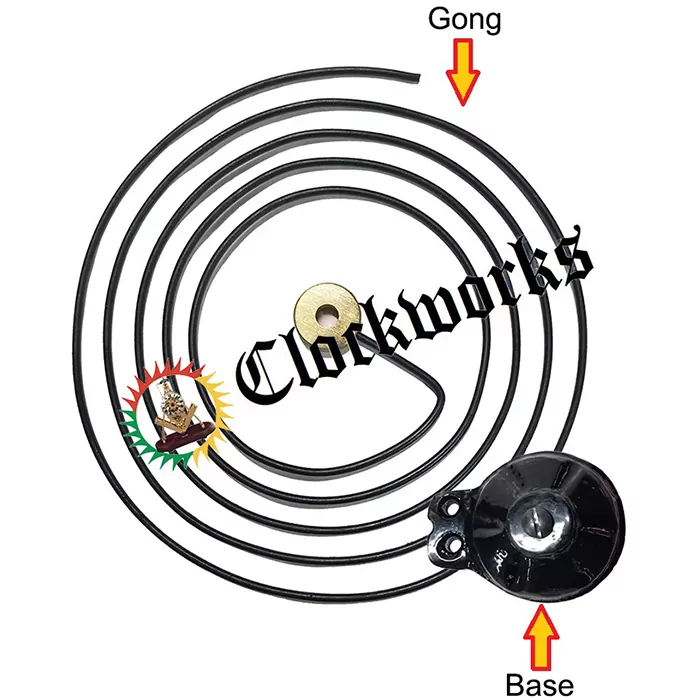
The gong comes with a small metal mounting base. After the base installation, the gong wire is next. The base has a mounting screw that is already in the base's center. Take the screw off the base, put the gong wire on it, then screw it back together.
Before tightening it up too much, position the gong wire to its approximate position and then tighten it. Approximate position because as previously mentioned, the hammer wire on the movement is what will be the final adjustment.

Gong-Strike Wall Clock Kit Instructions - Mounting the Dial
The dial on this kit is a simple white round dial with gold trim and Arabic numerals. We drill the dial for the winding arbor configuration of the movement. This is done so the clock can be wound up with the key.
Attach the dial to a thin board by drilling holes and using some brass finishing nails, or screws, to adhere it to the board. Alternately, epoxy will also work to attach it to the board. Position the dial so the hand shaft itself and the winding posts align with the dial holes.
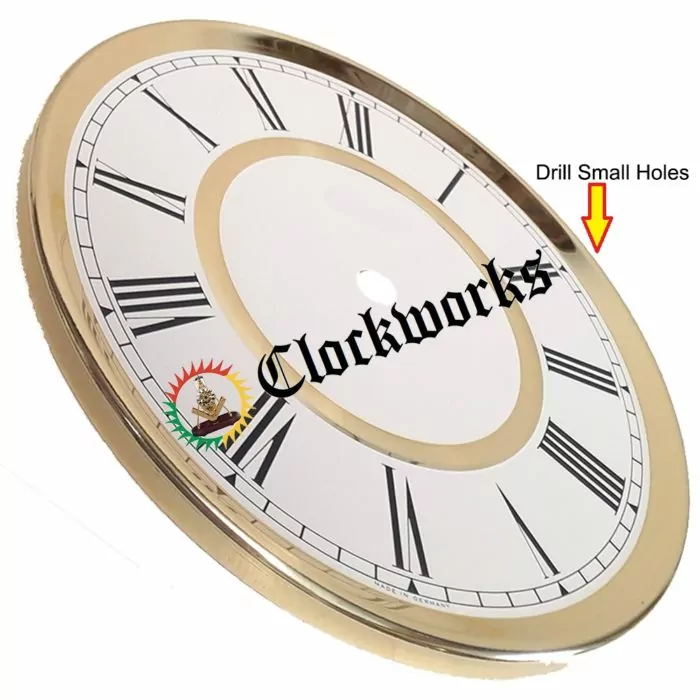
Gong-Strike Wall Clock Kit Instructions - Installing the Hands
After mounting the dial, it is time to put the hands on the clock. First, install the hour hand. It is a friction fit so twist and push down toward the dial at the same time. The more the hour hand pushes down, the tighter the fit will be because the post is tapers.
Fairly snug but not touching the dial or the minute hand. The hour hand, the dial, and the minute hand should all be parallel with each other. They cannot hit each other during any part of their rotation.
Hands for modern German units have a center mount in the minute hand that rotates. If the clock does not strike exactly on the hour or the quarters like it should, follow the following steps. To correct this issue, take the minute hand off of the clock and turn it over.
With a pair of needle nose pliers, rotate the center mounting bushing a little bit. Hold the minute hand in one hand, the needle nose pliers in the other while grabbing and spinning this center hand bushing.
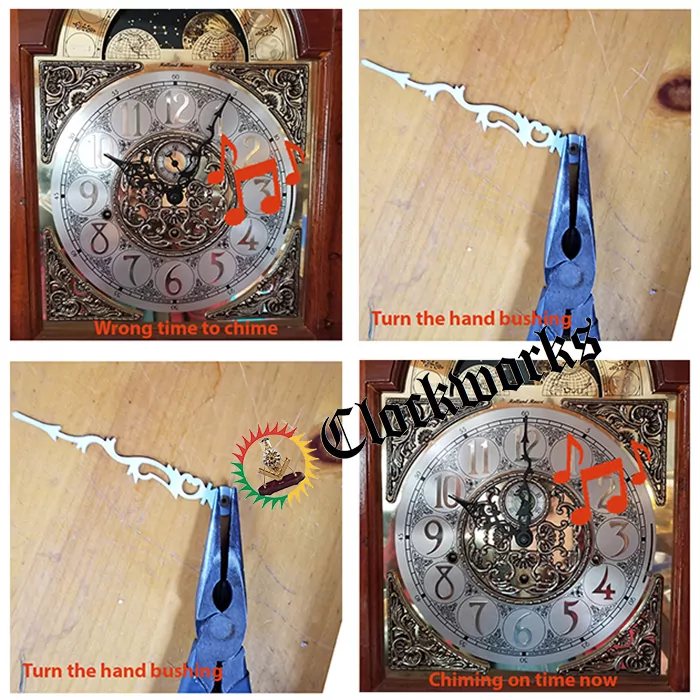
Gong-Strike Wall Clock Kit Instructions - Hanging the Pendulum
The three components are the suspension spring at the very top, the leader it hangs on, and then the pendulum length all the way down to the very bottom of the pendulum rating nut threads.
The movement will arrive with the the suspension spring already in place. However, the leader that hangs on it may not be. Put on as follows: Take the set screw out of the suspension post to release the suspension spring and then lower it some. When lowering the spring, hook on the leader.
At the same time, the leader should engage with the crutch that swings back and forth on the back of the movement. Goal is to have the leader in the center of the crutch that swings it, hooking up the top to the suspension.
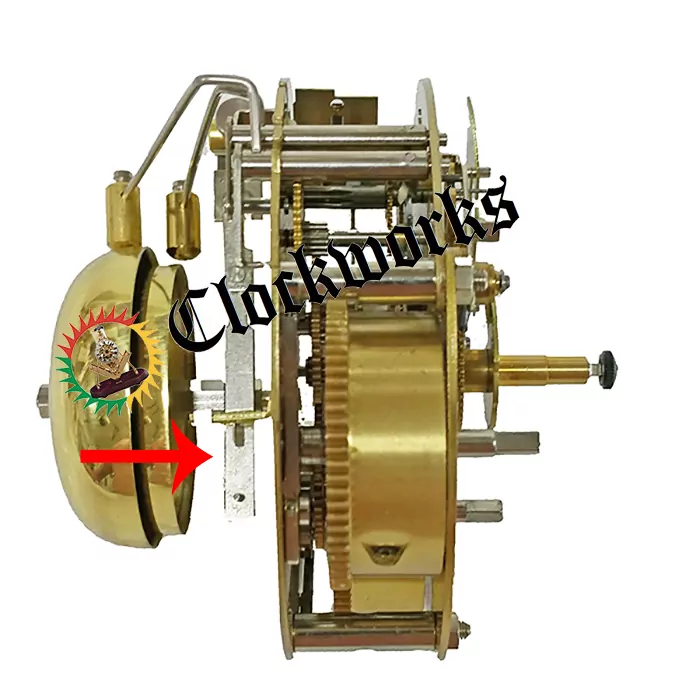
Once you attach the leader to the suspension, bring the two part assembly back up to where it should be. Reinstall the thumb screw that holds the suspension spring, and now also the leader. Hang the pendulum onto the bottom of the leader and put it in beat. It will not run if it is not put into beat, this is easy to do.
Gong-Strike Wall Clock Kit Instructions - Why put a clock in beat
Every pendulum clock needs to be put into beat to operate. If the clock is not put into beat it will run for 5 minutes to 12 hours and then stop every time.
A common issue with mechanical clocks is that it stops working after moving it. This is usually from someone moving the clock without taking the pendulum off and this puts the clock out of beat.
Out of beat is a term in the clock repair world that basically means the clock is going tock-tick, tock-tick instead of tick - tock - tick - tock. The easy fix is by tilting the clock and putting a shim under one side.
This can temporarily correct the problem and the clock runs fine. This method, however, is not as good as correcting the beat and having the clock run when it is truly straight and level.
Adjust the beat by pushing the top of the pendulum left or right as it hangs in its clock case. Hold a lower portion of the pendulum with the left hand as pushing the top of the pendulum left or right with the right hand. Feel the freedom in the pendulum to move left or right.
With some resistance at the sides at the end of the left or right travel. The is changing the beat of the clock when going beyond this resistance and therefore changing the place of the freedom area. Do not worry about breaking the clock there is nothing to break when going left or right.
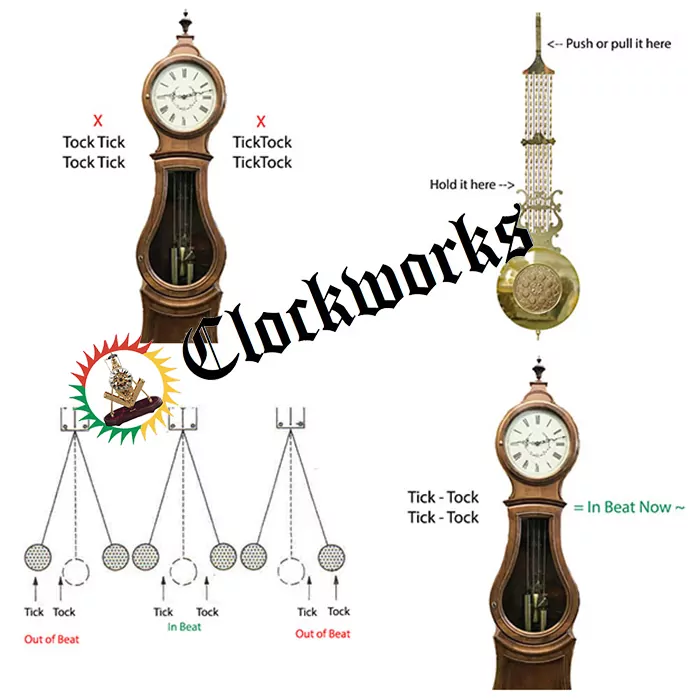
Timing
The pendulum is responsible for all the timekeeping of the movement. There is a rating nut on the bottom of the pendulum that turns to get the time perfect. Timing a clock takes some time and patience to get perfect and adjust it a few times to get it right.
When turning this nut, it is either raising or lowering the round bob at the bottom of the pendulum. This positioning is what speeds or slows time. Turning the nut to the right to raise the bob, time will go faster. Turn it the opposite way to slow it down.

This concludes the Gong-Strike Wall Clock Kit Instructions.
[post-content id=100711 shortcodes="true"]
Updated on: 20/12/2024
Thank you!
